Watercolor Painting for Beginners
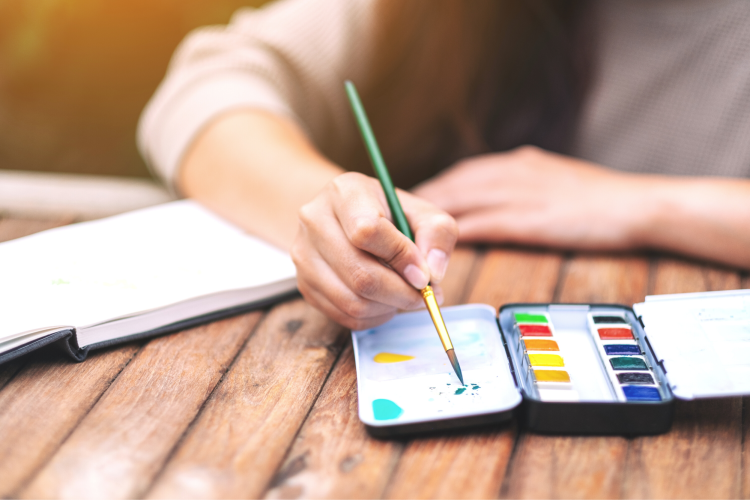
Watercolor painting for beginners can seem intimidating, but it doesn’t have to be! In fact, it is quite relaxing. According to a study in the National Library of Medicine, watercolor painting even improves quality of life and depression in cancer patients having chemotherapy. It also helps relieve stress while creating something beautiful! Once you understand the basics behind the technique, you'll be a watercolor artist in no time.
If you dream of crafting beautiful and whimsical watercolor works, but have no idea where to start, it’s time to change that! In this guide, we break down the complex artform of watercolor painting for beginners. We’ll share how to paint successfully with watercolors, leave you with a bunch of recommendations for the best watercolor supplies for beginners and offer easy watercolor painting ideas for beginners.
Jump to Section
- How to Paint With Watercolors
- Watercolor Supplies for Beginners
- Best Watercolor Paints for Beginners
- Best Watercolor Brushes for Beginners
- Watercolor Techniques for Beginners
- Easy Watercolor Paintings for Beginners
How to Paint With Watercolors
If you want to paint better pictures than cave paintings, perhaps the simplest way to learn how to paint with watercolors is to take a painting class and learn from true watercolor artists. These artists have spent years dedicating themselves to the craft, and they want to share their expertise with you!
You can learn all the tips and secrets right from your home with interactive online painting classes. There’s all sorts of in-person painting classes offered, too, if you learn better in a more traditional teaching setting.
You can even try a fun paint and sip event if you really want to make a splash! Browse paint and sip in NYC, paint and sip in Orange County, paint and sip Sacramento, or in a city near you. Either way, you’ll learn all about how to get started with watercolor painting.
In order to successfully tackle watercolor painting for beginners, you’ll need to invest in the proper watercolor supplies and learn the best watercolor painting techniques, whether you decide to take a class or not. Read on to learn more about the supplies you’ll need and the skills you’ll want to master, so you can start the journey of watercolor painting for beginners!
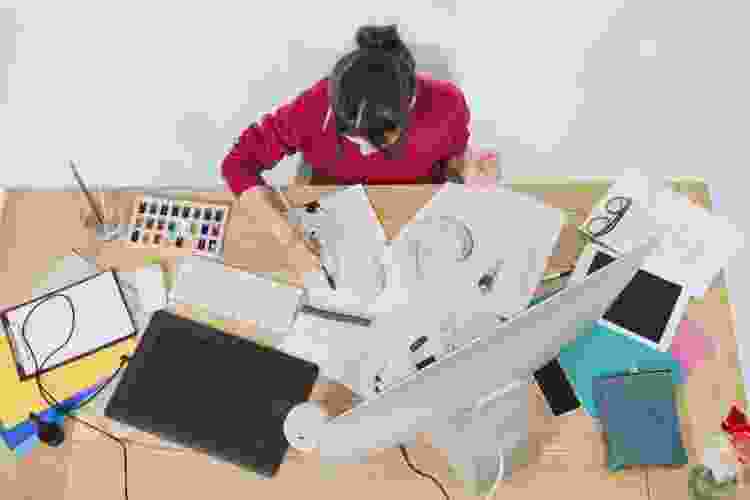
Watercolor Supplies for Beginners
While watercolor paints and brushes are the most obvious and essential supplies (we’ll break each of these down in their own section, don’t worry!), there are also some other pretty important watercolor supplies you’ll need before you can get started with watercolor painting for beginners.
Watercolor Paper
When it comes to watercolor painting for beginners, you’ll definitely want to use watercolor paper. It’s heavier than regular paper and won’t absorb the pigments. Basically, your paints will sit atop the paper’s surface until it dries, rather than spreading out and bleeding, creating that weird buckled and wavy wash. This 300 series watercolor paper by Strathmore is a great and budget-friendly option for the beginner watercolor artist.
Painting Palette
You’ll want a painting palette to mix your colors and make sure you have the right amount of water added for the color you want. The amount of water you mix with the pigment will determine the shade of your color. The palette is an essential tool for watercolor painting for beginners and pros alike.
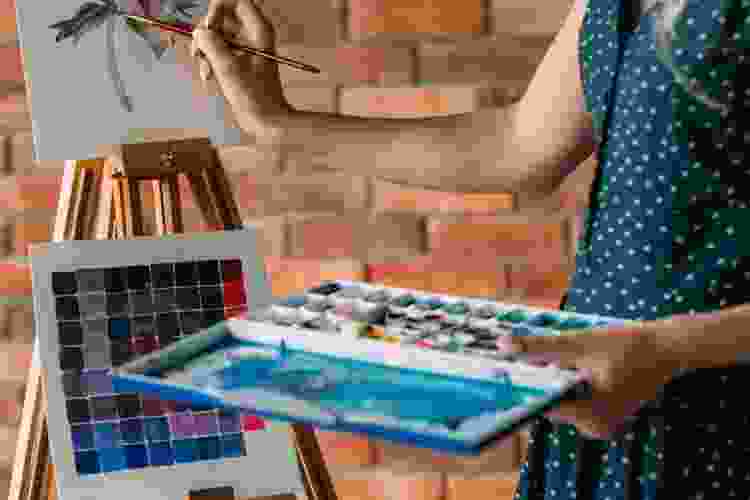
Water and Cloth/Papertowels
It might seem obvious when watercolor painting for beginners, but you’ll need clean water for watercolor painting, as well as a cloth or paper towels to dab and clean off your brushes.
Masking or Painter Tape
This is an optional supply, but definitely comes in handy if you want to create really crisp, clean edges to frame your painting. It can also be used to paint some cool geometric patterns, which makes for some pretty fun watercolor painting for beginners.
Best Watercolor Paints for Beginners
Pans vs. Tubes
Watercolor paints come in tubes and pans, but it doesn’t really matter which you choose, so long as you invest in high-quality paints. Low-quality brands won’t stay smooth and even, but will instead have a cracked and chalky look. Quality is key when it comes to watercolor painting for beginners.
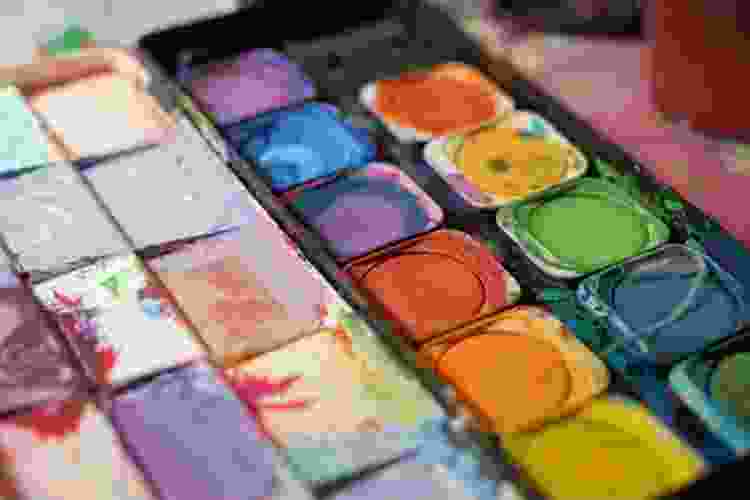
Watercolor Grades
There are three different watercolor grades available on the market: children’s, student and artist. Student grade is generally the most recommended when it comes to watercolor painting for beginners. The Winsor & Newton set is a great student grade set of 24 different colors, making it one of the best watercolor paints for beginners.
Best Watercolor Brushes for Beginners
Types of Brushes
Brushes are a very personal tool, so preference will vary from person to person, but there are a few different types of brushes you’ll want on hand when you start watercolor painting for beginners. With small, medium and large round brushes, a flat brush and a mop brush, you’ll be able to experiment with different kinds of brush strokes to create different effects. A great brush to start with is a size-eight round brush (medium sized), as it’s one of the most versatile and will let you create a wide range of different brushstrokes.
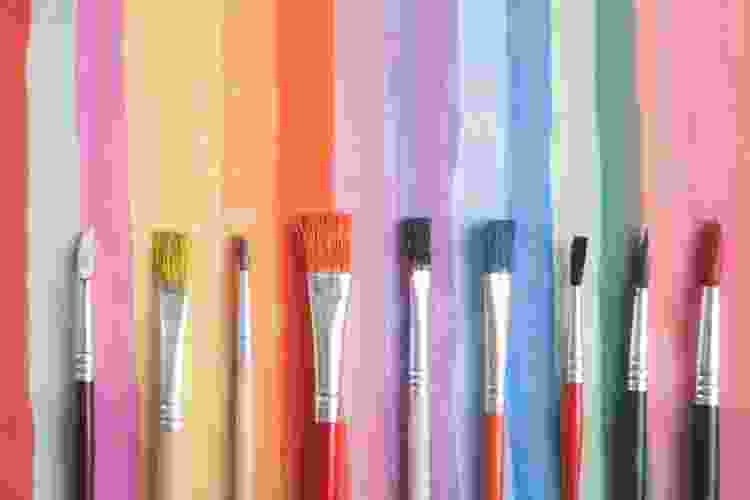
Material
A great watercolor brush will hold a lot of water, so the best brushes are made from natural hair. However, these can be on the pricier side, so the best watercolor brush for beginners is generally one that is a mix of natural and synthetic bristles. Unless, of course, you want to invest right away in a professional-grade brush. Any artist will agree that good brushes will make watercolor painting for beginners a much easier and better experience!
Watercolor Techniques for Beginners
Wet on Dry
With this technique, you apply wet paint onto dry paper or onto an area of already-dry paint. This watercolor technique for beginners will give the painter the most control and precision because the paint will only go wherever your brushstrokes place it. In other words, the paint won’t run or bleed at all, like in the following wet on wet technique. This is one of the most useful skills when it comes to watercolor painting for beginners.
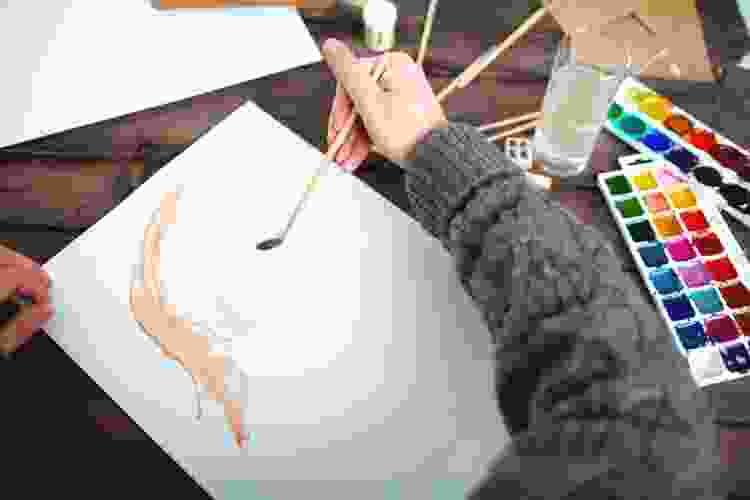
Wet on Wet
As the name implies, wet paint is applied to either wet paper or added to a wash of fresh, wet paint already on the paper. This will create a fluid effect and unpredictable spread of color, as the water flows from wet to less wet areas. You don’t really have a whole lot of control with this technique, but it’s fun and can result in some pretty unique patterns. This can be a tricky skill when you first start exploring watercolor painting for beginners, so don’t be afraid to experiment and practice with it.
Mixing Colors
When it comes to mixing watercolors, the water to paint ratio is essential. The more water you add, the lighter the color. For a light color, wet the brush and just barely dab it with the pigment. Gradually increase the amount of pigment to darken the color. For a really dark color, you will actually want to blot excess water off the brush until the brush is just barely moist.
The amount of water will also determine how much the paint will spread. Large washes (think background) will require more water, while detail work will need less water. You can also mix two different pigments together to create a new color. This is where a palette comes in handy, so you can moisten and mix the pigments together. A great tip is to check your colors on a piece of scrap paper to make sure you like how they mixed, as it makes watercolor painting for beginners a lot more successful.
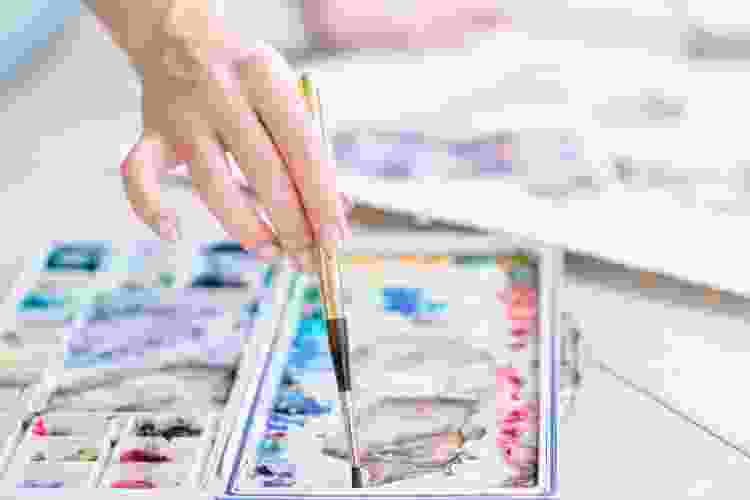
Dry Time
Since wet on wet and wet on dry painting will produce different effects, dry time can also affect watercolor painting for beginners. Depending on how much you want the colors to blend and bleed, or not, will require different dry times. The drier the bottom layer, the less the colors will mix, giving your top layer more defined edges. Experimenting with different dry times and their effects is a great way to learn a bit more about watercolor painting for beginners.
Creating Gradients
A very useful technique to help with watercolor painting for beginners is creating gradients, in which the painter gradually switches from one color to the next. After selecting two colors that are close on the color wheel (you want them to blend well and avoid clashing), mix each color separately. Start by painting a strip of color with a single stroke of just one color. Clean your brush. Then, pick up just a little bit of the other color paint and mix it into the first color on your palette.
With this slightly mixed color, you can then pick up where you left off with your last brushstroke, building the gradient. You’ll then clean the brush and repeat the process over and over again until you eventually arrive at the second color. This is a tricky technique to master, but gradual mixing on the palette is great practice when watercolor painting for beginners.
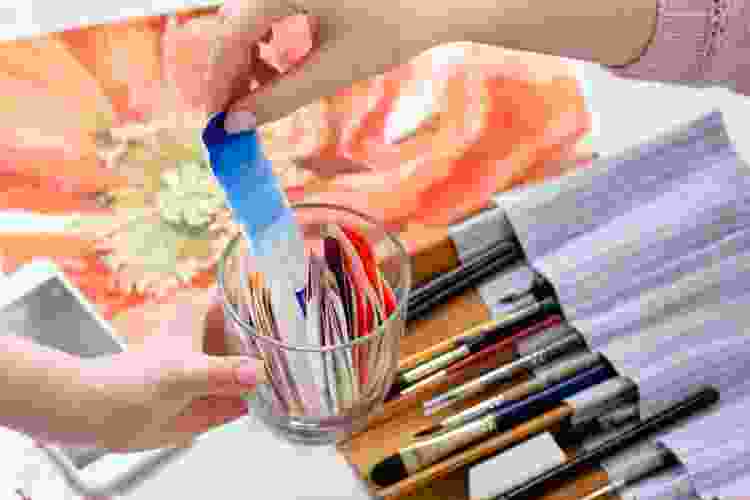
Ink and Wash Technique
One way watercolor painting for beginners can be made somewhat easier is to use the ink and wash technique. Sketch out your drawing in pencil, then trace over it with a waterproof ink pen. Then, you can add the watercolors to fill-in between the lines. It’s a great technique to add a bit of structure and boost confidence when it comes to watercolor painting for beginners. Look to the many Andrew Wyeth paintings for inspiration on how to incorporate muted watercolors into your scenes.
Easy Watercolor Paintings for Beginners
Flowers
Flowers are beautiful, colorful and often free-flowing in shape, which makes them a great subject for watercolor painting for beginners. Again, there’s no perfection in nature, so any stray brush strokes are nothing to worry about. Flowers in a vase are another fun option for beginners to explore.
Fruit and Vegetables
A great watercolor painting idea for beginners is fruit and vegetables. They have a simple shape, and even in real life they don’t look perfect….so, nobody will know if you accidentally mess up a bit. You meant to do that, right?

Watercolor House Painting
When you feel ready to tackle something with a bit of symmetry, a watercolor house painting is another great watercolor painting idea for beginners. Houses are all very different, which means you can stick to a simple architectural design or make it more challenging with a more intricate house. Drawing the outline of the house beforehand (consider using the ink and wash technique) will make watercolor painting for beginners even easier!
Simple Landscapes
Keeping it simple is a good idea when it comes to watercolor painting for beginners, and simple landscapes are pretty easy watercolor paintings. With just a few wavy lines and some basic shapes, you can create some mountain scenery and a bit of greenery. If you prefer waves to mountains, you can swirl up some ocean watercolor painting scenes or maybe a beach watercolor painting instead.
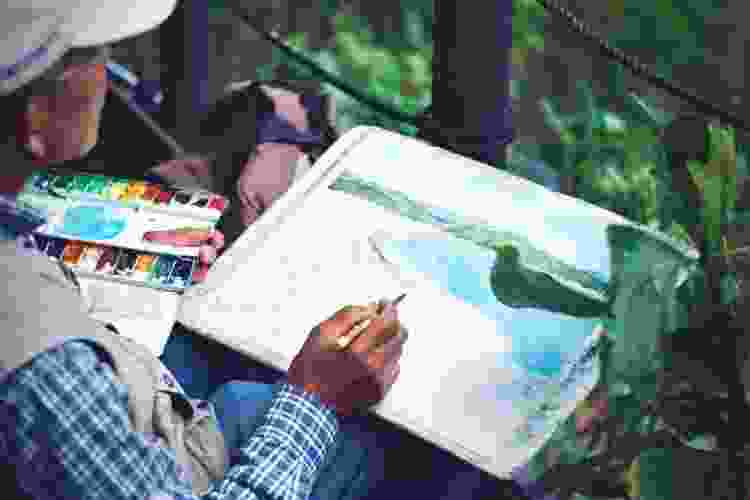
Once you know a bit about the supplies, techniques and process, watercolor painting for beginners becomes a whole lot less complicated than it might initially appear! Hopefully, you feel a bit more prepared to start painting, after you stock up on those important supplies, like watercolor paper and some high-quality watercolor paints, of course.
So, now that you know some basic watercolor techniques, it’s time to put them in action. With a little bit of practice, you’ll be creating beautiful beach watercolor paintings and mesmerizing ocean watercolor paintings in no time. Or, maybe you’ll find inspiration elsewhere, such as the flowers outside in your garden or the fruit on your kitchen table. Let your creativity shine and start exploring some watercolor painting for beginners today!
For even more fun painting ideas, check out other experiences happening on Classpop!

